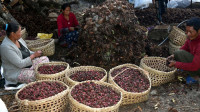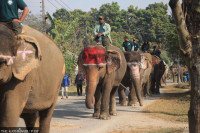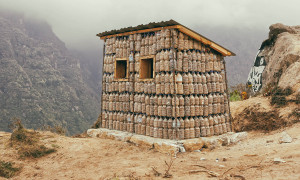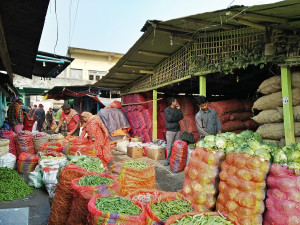Money
Tunnel boring machine to dig under Chure hills
The Bheri Babai Diversion Multipurpose Project has become the first project in the country to import a tunnel boring machine. The equipment will be used to dig a 12-km tunnel under the Chure hills to transfer water from the Bheri River to the Babai River.China Overseas Engineering Group, the contractor hired to develop the project, brought the tunnel boring machine manufactured by Robbins Company of the US to the project site on Tuesday.
The Bheri Babai Diversion Multipurpose Project has become the first project in the country to import a tunnel boring machine. The equipment will be used to dig a 12-km tunnel under the Chure hills to transfer water from the Bheri River to the Babai River.
China Overseas Engineering Group, the contractor hired to develop the project, brought the tunnel boring machine manufactured by Robbins Company of the US to the project site on Tuesday.
“A convoy of 54 container trucks has delivered the machine’s components to the project site,” said Shiva Kumar Basnet, the government appointed project chief of the multipurpose project. “Now the manufacturing company will assemble and install the machine at the site.”
According to Basnet, it will take at least two and a half months to complete the installation of the 250-metre long machine. After the machine is installed, it will chew its way under the Chure hills to create a 4.2-metre wide and 12-km long tunnel.
It will take around two-three years to dig the entire tunnel. The manufacturing company will demonstrate the use of the machine by digging a 5-metre tunnel. The Chinese contractor has installed a 4 MW diesel plant at the project site to supply power to operate the machine
The Bheri Babai Multipurpose Diversion Project is a national pride project located at Bheri-Ganga Municipality in Surkhet district in western Nepal. It will have a dam 15 metres high and divert 40 cubic metres of water per second from the Bheri River to the Babai River.
The water will be used to irrigate 51,000 hectares of land round the year in Banke and Bardia districts. The project will also generate 48 MW of electricity.
The irrigation-cum-hydroelectric project is one of the strategic projects of the country, as it is expected to ease the food crisis in the mid-western region by increasing agricultural yields.
Some of the salient features of the project are easy access to road network, limited environmental hazards, less use of water from the Bheri River and little negative impact in the vicinity of the dam site. Also, only 30 hectares of land need to acquired to build the dam. The government had invited bids for the construction of the project in July 2012, but lack of resources and delays in the appointment of a contractor prevented the four-year project from moving ahead. The construction of the project was finally inaugurated in April 2015 by the then prime minister, the late Sushil Koirala.
The total cost of the project is estimated to be around Rs16 billion. It is expected to make an indirect financial contribution of Rs3.1 billion to the state, and a direct revenue contribution of Rs2.1 billion through energy sales.




 16.12°C Kathmandu
16.12°C Kathmandu













